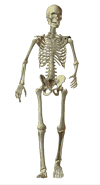Nicholas Andry (Lyon 1658 – Paris 1742): Father of Orthopaedics
Articles:
About Nicholas Andry (Lyon 1658 – Paris 1742): Father of Orthopaedics
Andry was born in Lyon in 1658 and started his studies in theology but was drawn to the field of medicine. In 1697 he defended his thesis: The Relationship in the Management of Diseases Between the Happiness of the Doctor and the Obedience of the Patient. He became well known for his stand against the “bleeding barber surgeons” and worked tirelessly to limit their venues.
His fellow faculty members depicted him as “superb, spiteful, confused, scornful, irascible and jealous” as described by R. Kohler in the European Orthopaedics Bulletin. Andry was creative and prolific in his writings. In 1700 he wrote his first book in which his explanations earned him the title “Father of Parasitology”. At the age of 80 he published his famous workL’Orthopedie, a two volume set, in Paris in 1741 and it was translated in Brussels in 1742, London in 1743 and Berlin in 1744.
The book had artistic chapters on external proportions, methods of preventing trunk and spine deformities and had suggestions for physical therapy. In a section addressing limb deformities, Andry recommended a bent leg be corrected by bandaging it to an iron plate as was commonly done to straighten the crooked trunk of a sapling. From there came the orthopaedic crooked tree symbol, which has stood the test of time, translation and modernization.
Andry died in Paris at the age of 84 not long after having written his famous volume L’Orthopedie. Kohler reminds us that Nicholas Andry neither deserves to be scorned nor to be revered. “He produced fundamental ideas on methods of prevention, the plasticity of the child and the importance of gymnastics” and was known for his astute observations and colorful personality. Few of Man’s whims or drawings or scribblings have survived to become as internationally recognized as the “Tree of Andry”.
Douglas Kiburz, MD is an orthopaedic surgeon and sculptor who produced a three-dimensional, copper interpretation of the 1741 Tree of Andry, which is pictured to the right.
Request Product Information
OrthopaedicLIST.com is a list of products and services. Every effort is made to keep this listing as accurate and current as possible. Companies and individuals are encouraged to notify us of errors and omissions. We will respond to such messages of correction in a timely fashion, as our workload permits.
We are non-judgmental of products listed. We are not in the business of evaluating products. We have not evaluated these products. We make no representations as to the quality, effectiveness, suitability or appropriateness of any of the products listed.
As an important component of the service function of OrthopaedicLIST.com, some products continue to be listed that are no longer manufactured and may not be available. We will identify them as such when possible. This allows users to find special instruments and/or components for removal, modification, and/or revision of those products.




 Click to Enlarge
Click to Enlarge